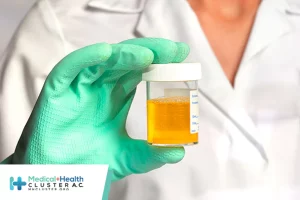CONDENA MH CLÚSTER ATAQUE ARMADO A HOSPITAL ARCÁNGELES
Leer más
Clinical Spectrum of SARS-CoV-2 Infection

Patients with SARS-CoV-2 infection can experience a range of clinical manifestations, from no symptoms to critical illness. This section of the Guidelines discusses the clinical presentation of SARS-CoV-2-infected individuals according to illness severity.
In general, adults with SARS-CoV-2 infection can be grouped into the following severity of illness categories. However, the criteria for each category may overlap or vary across clinical guidelines and clinical trials, and a patient’s clinical status may change over time.
Asymptomatic or Presymptomatic Infection: Individuals who test positive for SARS-CoV-2 using a virologic test (i.e., a nucleic acid amplification test [NAAT] or an antigen test) but who have no symptoms that are consistent with COVID-19.
Mild Illness: Individuals who have any of the various signs and symptoms of COVID-19 (e.g., fever, cough, sore throat, malaise, headache, muscle pain, nausea, vomiting, diarrhea, loss of taste and smell) but who do not have shortness of breath, dyspnea, or abnormal chest imaging.
Moderate Illness: Individuals who show evidence of lower respiratory disease during clinical assessment or imaging and who have an oxygen saturation (SpO2) ≥94% on room air at sea level.
Severe Illness: Individuals who have SpO2 <94% on room air at sea level, a ratio of arterial partial pressure of oxygen to fraction of inspired oxygen (PaO2/FiO2) <300 mm Hg, respiratory frequency >30 breaths/min, or lung infiltrates >50%.
Critical Illness: Individuals who have respiratory failure, septic shock, and/or multiple organ dysfunction.
Patients with certain underlying comorbidities are at a higher risk of progressing to severe COVID-19. These comorbidities include being aged 65 years or older; having cardiovascular disease, chronic lung disease, sickle cell disease, diabetes, cancer, obesity, or chronic kidney disease; being pregnant; being a cigarette smoker; and being a recipient of transplant or immunosuppressive therapy.1 Health care providers should monitor such patients closely until clinical recovery is achieved.
The optimal pulmonary imaging technique has not yet been defined for people with symptomatic SARS-CoV-2 infection. Initial evaluation for these patients may include chest X-ray, ultrasound, or, if indicated, computed tomography. An electrocardiogram should be performed if indicated. Laboratory testing includes a complete blood count with differential and a metabolic profile, including liver and renal function tests. Although inflammatory markers such as C-reactive protein (CRP), D-dimer, and ferritin are not routinely measured as part of standard care, results from such measurements may have prognostic value.2-4
The definitions for the severity of illness categories listed above also apply to pregnant patients. However, the threshold for certain interventions may be different for pregnant patients and nonpregnant patients. For example, oxygen supplementation is recommended for pregnant patients when SpO2 falls below 95% on room air at sea level to accommodate physiologic changes in oxygen demand during pregnancy and to ensure adequate oxygen delivery to the fetus.5 If laboratory parameters are used for monitoring pregnant patients and making decisions about interventions, clinicians should be aware that normal physiologic changes during pregnancy can alter several laboratory values. In general, leukocyte cell count increases throughout gestation and delivery and peaks during the immediate postpartum period. This increase is mainly due to neutrophilia.6 D-dimer and CRP levels also increase during pregnancy and are often higher in pregnant patients than nonpregnant patients.7 Detailed information on treating COVID-19 in pregnant patients can be found in Special Considerations in Pregnancy and in the pregnancy considerations subsection of each individual section of the Guidelines.
In pediatric patients, radiographic abnormalities are common and, for the most part, should not be the only criteria used to determine the severity of illness. The normal values for respiratory rate also vary with age in children; thus, hypoxia should be the primary criterion used to define severe COVID-19, especially in younger children. In a small number of children and in some young adults, SARS-CoV-2 infection may be followed by a severe inflammatory condition called multisystem inflammatory syndrome in children (MIS-C).8,9 This syndrome is discussed in detail in Special Considerations in Children.
Asymptomatic or Presymptomatic Infection
Asymptomatic SARS-CoV-2 infection can occur, although the percentage of patients who remain truly asymptomatic throughout the course of infection is variable and incompletely defined. It is unclear what percentage of individuals who present with asymptomatic infection progress to clinical disease. Some asymptomatic individuals have been reported to have objective radiographic findings that are consistent with COVID-19 pneumonia.10,11 The availability of widespread virologic testing for SARS-CoV-2 and the development of reliable serologic assays for antibodies to the virus will help determine the true prevalence of asymptomatic and presymptomatic infection. See Therapeutic Management of Adults With COVID-19 for recommendations regarding SARS-CoV-2–specific therapy.
Mild Illness
Patients with mild illness may exhibit a variety of signs and symptoms (e.g., fever, cough, sore throat, malaise, headache, muscle pain, nausea, vomiting, diarrhea, loss of taste and smell). They do not have shortness of breath, dyspnea on exertion, or abnormal imaging. Most mildly ill patients can be managed in an ambulatory setting or at home through telemedicine or telephone visits. No imaging or specific laboratory evaluations are routinely indicated in otherwise healthy patients with mild COVID-19. Older patients and those with underlying comorbidities are at higher risk of disease progression; therefore, health care providers should monitor these patients closely until clinical recovery is achieved. See Therapeutic Management of Adults With COVID-19 for recommendations regarding SARS-CoV-2-specific therapy.
Moderate Illness
Moderate illness is defined as evidence of lower respiratory disease during clinical assessment or imaging, with SpO2 ≥94% on room air at sea level. Given that pulmonary disease can progress rapidly in patients with COVID-19, patients with moderate disease should be closely monitored. If bacterial pneumonia or sepsis is suspected, administer empiric antibiotic treatment, re-evaluate the patient daily, and de-escalate or stop antibiotics if there is no evidence of bacterial infection. See Therapeutic Management of Adults With COVID-19 for recommendations regarding SARS-CoV-2–specific therapy.
Severe Illness
Patients with COVID-19 are considered to have severe illness if they have SpO2 <94% on room air at sea level, a respiratory rate >30 breaths/min, PaO2/FiO2 <300 mm Hg, or lung infiltrates >50%. These patients may experience rapid clinical deterioration. Oxygen therapy should be administered immediately using a nasal cannula or a high-flow oxygen device. See Therapeutic Management of Adults With COVID-19 for recommendations regarding SARS-CoV-2-specific therapy. If secondary bacterial pneumonia or sepsis is suspected, administer empiric antibiotics, re-evaluate the patient daily, and de-escalate or stop antibiotics if there is no evidence of bacterial infection.
Critical Illness
Critically ill patients may have acute respiratory distress syndrome, septic shock that may represent virus-induced distributive shock, cardiac dysfunction, an exaggerated inflammatory response, and/or exacerbation of underlying comorbidities. In addition to pulmonary disease, patients with critical illness may also experience cardiac, hepatic, renal, central nervous system, or thrombotic disease.
As with any patient in the intensive care unit (ICU), successful clinical management of a patient with COVID-19 includes treating both the medical condition that initially resulted in ICU admission and other comorbidities and nosocomial complications.
For more information, see Care of Critically Ill Patients With COVID-19.
SARS-CoV-2 Reinfection
As seen with other viral infections, reinfection with SARS-CoV-2 after recovery from prior infection has been reported.12 The true prevalence of reinfection is not known, although there are concerns that it may occur with increased frequency with the circulation of new variants.13 SARS-CoV-2 can often be detected from nasal swab for weeks to months after initial infection, therefore, repeat testing to evaluate for reinfection should be considered only for those who have recovered from initial infection and present with COVID-19-compatible symptoms with no obvious alternate etiology (AIII).14 Diagnostic testing in this setting is summarized in Testing for SARS-CoV-2 Infection. In addition, if reinfection is suspected, guidelines for the diagnosis and evaluation of suspected SARS-CoV-2 reinfection are provided by the Centers for Disease Control and Prevention (CDC).15
It has been speculated that reinfection may occur more frequently in those with a less robust immune response during the initial infection, as is often reported in those with mild illness. Reinfection may also occur as initial immune responses wane over time. Nevertheless, one review noted that SARS-CoV-2 reinfection occurred after previous severe disease in three cases and as early as 3 weeks after diagnosis of the initial infection.16 A public site posts a variety of published and unpublished reports of reinfection, noting that it has been described to occur from as early as a few weeks to many months after initial infection, and occasionally follows episodes of severe COVID-19.17 Although data are limited, there is no evidence to suggest that the treatment of highly suspected or documented SARS-CoV-2 reinfection should be different from that for initial infection as outlined in Therapeutic Management of Adults With COVID-19.
Persistent Symptoms or Organ Dysfunction After Acute COVID-19
There have been an increasing number of reports of patients who experience persistent symptoms and/or organ dysfunction after acute COVID-19. Data about the incidence, natural history, and etiology of these symptoms are emerging. However, these reports have several limitations, including lack of an agreed-upon case definition and potential bias as most reports included only patients who attended post-COVID-19 clinics and no comparator groups. No specific treatments for the persistent effects of COVID-19 have yet been identified, although this COVID-19 rapid guideline proposes general management strategies.
The nomenclature for this phenomenon is evolving, and there is no established clinical terminology to date. It has been referred to as post-COVID-19 condition or colloquially, “long COVID,” and affected patients have been referred to as “long haulers.” The term “post-acute sequelae of COVID-19” (PASC) has also been used to describe late sequelae of SARS-CoV-2 infection that include these persistent symptoms, as well as other delayed syndromes such as MIS-C and multisystem inflammatory syndrome in adults (MIS-A). To date, no case definition and no specific time frame have been established to define the syndrome of persistent symptoms and/or organ dysfunction after acute COVID-19. However, CDC recently proposed defining late sequelae as sequelae that extend >4 weeks after initial infection.18,19 The Patient-Led Research Collaborative for COVID-19 defines long COVID as a collection of symptoms that develop during or following a confirmed or suspected case of COVID-19 and that continue for >28 days.20 Incidence rates vary widely, from about 10% in some reports to one cohort study in which 87% of patients reported at least one persistent symptom.21
Some of the symptoms overlap with the post-intensive care syndrome (PICS) that has been described in patients without COVID-19, but prolonged symptoms and disabilities after COVID-19 have also been reported in patients with milder illness, including outpatients (see General Considerations for information on PICS).22,23
Despite limitations of the available descriptive data related to these persistent symptoms, some representative studies have suggested that common findings include fatigue, joint pain, chest pain, palpitations, shortness of breath, cognitive impairment, and worsened quality of life.24,25
CDC conducted a telephone survey of a random sample of 292 adult outpatients who had positive polymerase chain reaction results for SARS-CoV-2. Among the 274 respondents who were symptomatic at the time of testing, 35% reported not having returned to their usual state of health 2 weeks or more after testing; 26% among patients aged 18 to 34 years, 32% among those aged 35 to 49 years, and 47% among those aged ≥50 years.23 An age of ≥50 years and the presence of three or more chronic medical conditions were associated with not returning to usual health within 14 to 21 days. Moreover, one in five individuals aged 18 to 34 years who did not have chronic medical conditions had not returned to baseline health when interviewed at a median of 16 days from the testing date.
In a cohort study from Wuhan, China, 1,733 discharged patients with COVID-19 were evaluated for persistent symptoms at a median of 186 days after symptom onset.26 The most common symptoms were fatigue or muscle weakness and sleep difficulties (reported among 63% and 26% of participants, respectively). Anxiety or depression was reported among 23% of patients.
In a longitudinal prospective cohort of mostly outpatients with laboratory-confirmed SARS-CoV-2 infection at the University of Washington, 177 participants completed a follow-up questionnaire between 3 and 9 months after illness onset.27 Overall, 91% of the respondents were outpatients (150 with mild illness and 11 with no symptoms), and only 9.0% had moderate or severe disease requiring hospitalization. Among those reporting symptoms, 33% of the outpatients and 31% of the hospitalized patients reported at least one persistent symptom. Persistent symptoms were reported by 27% of the patients aged 18 to 39 years, 30% aged 40 to 64 years, and 43% aged ≥65 years. The most common persistent symptoms were loss of sense of smell or taste and fatigue (both reported by 14% of participants).
Fatigue
The prevalence of fatigue among 128 individuals from Ireland who had recovered from the acute phase of COVID-19 was examined using the Chalder Fatigue Scale (CFQ11). More than half of patients (67 of 128 patients [52.3%]) reported persistent fatigue at a median of 10 weeks after initial symptoms first appeared. There was no association between illness severity and fatigue.28 An outpatient service for patients recovering from acute COVID-19 developed in Italy reported that 87% of 143 patients surveyed reported persistent symptoms at a mean of 60 days after symptom onset, with the most common symptom being fatigue (which occurred in 53.1% of these patients).21
Cardiopulmonary
A study from the United Kingdom reported that among 100 hospitalized patients (32 received care in the ICU and 68 received care in hospital wards only), 72% of the ICU patients and 60% of the ward patients experienced fatigue and breathlessness at 4 to 8 weeks after hospital discharge. The authors suggested that posthospital rehabilitation may be necessary for some of these patients.24 A retrospective study from China found that pulmonary function (as measured by spirometry) was still impaired 1 month after hospital discharge in 31 of 57 patients (54.4%).29 In a study from Germany that included 100 patients who had recently recovered from COVID-19, cardiac magnetic resonance imaging (MRI) performed a median of 71 days after diagnosis revealed cardiac involvement in 78% of patients and ongoing myocardial inflammation in 60% of patients.30 A retrospective study from China of 26 patients who had recovered from COVID-19 and who had initially presented with cardiac symptoms found abnormalities on cardiac MRI in 15 patients (58%).31 The assessment of the prevalence of cardiac abnormalities in people with post-acute COVID-19 syndrome should be viewed with caution, however, as the analysis included only patients with cardiac symptoms.
Neuropsychiatric
Neurologic and psychiatric symptoms have also been reported among patients who have recovered from acute COVID-19. High rates of anxiety and depression have been reported in some patients using self-report scales for psychiatric distress.25,32 Younger patients have been reported to experience more psychiatric symptoms than patients aged >60 years.24,25 Patients may continue to experience headaches, vision changes, hearing loss, loss of taste or smell, impaired mobility, numbness in extremities, tremors, myalgia, memory loss, cognitive impairment, and mood changes for up to 3 months after diagnosis of COVID-19.33-35 One study in the United Kingdom administered cognitive tests to 84,285 participants who had recovered from suspected or confirmed SARS-CoV-2 infection. These participants had worse performances across multiple domains than would be expected for people with the same ages and demographic profiles; this effect was observed even among those who had not been hospitalized.36 However, the study authors did not report when the tests were administered in relation to the diagnosis of COVID-19.
Persistent symptoms after acute COVID-19 have also been reported in pregnant people.37 Systematic data on persistent symptoms in children following recovery from the acute phase of COVID-19 are not currently available, although case reports suggest that children may experience long-term effects similar to those experienced by adults after clinical COVID-19.38,39 MIS-C is discussed in Special Considerations in Children.
More research and more rigorous observational cohort studies are needed to better understand the pathophysiology and clinical course of these post-acute COVID-19 sequelae and to identify management strategies for patients. More information about ongoing studies can be found at ClinicalTrials.gov.
Créditos: Comité científico Covid




